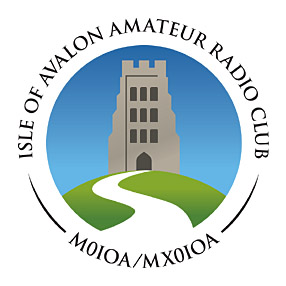Satellite Project
Dear all, as the token AMSAT member I get to do this, in the hope of attracting more interest.
Anyone motivated by any of this to get involved please do so. You too can watch the skies, stack nouns and circularly polarize.
Overview
The purpose of the project is to allow the Club to work amateur radio satellites, particularly dedicated AMSAT ones in Low Earth Orbit which are fast moving and rather difficult to track, as well as geosynchronous ones like QO-100 which do not require tracking at all.
AO-7
My own personal objective is to work AMSAT OSCAR-7 (Orbiting Satellite Carrying Amateur Radio) which was launched in 1974 and which was thought to have died in 1981, but which dramatically came back to life in 2002 and is still working, albeit only partly.
This satellite is so old that it was used for a series of early experiments prior to the design of the international COSPAS-SARSAT emergency locator system which was commissioned in 1979 and is now deployed worldwide.
AO-7, a good candidate for the title of ‘Oldest Working Earth Satellite’, might survive to its 50th birthday in 2024 but then again it might be better to work it now.
There are more than 100 other satellites carrying payloads with something to do with amateur radio and some think it the done thing to collect the set.
Progress 2022 April 1
Matt has authorised the installation of a satellite mast on the roof of the hut. This short mast, made of fibreglass, will also support the TVBCRX dish currently occupying the position. It will be guyed to the hut corners on the south side and to ground stakes on the north.
The Club’s new Yaesu G-5500DC dual axis rotator is to be mounted on the top of the satellite mast, with a section of the same fibreglass mast tubing as the Y-axis cross-boom.
Two (X,Y) rotator multicore control cables passing through the existing cable port connect the rotator on the mast to its control unit on top of the left-hand overhead cabinet in the shack.
A computer interface was built by G7LEE to allow the rotator control system to be worked via USB by a PC running suitable software. A netbook computer with Windows 7 and SATPC32 (demo version) is available.
Restored Yaesu FT-290 and FT-790 multimode rigs with linear amplifiers are available for Mode B SSB. However the Club also has more modern rigs which might be more suitable. Eventually computer controlled rigs will be used, allowing the guidance computer to predict and apply Doppler corrections automatically to uplink and downlink frequencies.
Any SSB HF rig covering 10m can be used for (e.g.) AO-7 Mode A uplink.
AMSAT sell VHF/UHF antenna sets intended for Mode B satellite work, but they are expensive (>$500). Accordingly we ought either to build our own antennas or to select general purpose ones which adequately cover the satellite bands (not all do).
A 10m antenna (rotary dipole or similar) is also required for Mode A uplink e.g. to AO-7.
Application of the link model (top link on page, .xls download) can reveal the gain required of the antennas and will allow us to select suitable designs.
Development
We can easily enhance the satellite antenna system at any time by adding a small dish, which would with suitable hardware allow us to work QO-100.
It is of course also feasible to build a portable earth station for this satellite, which would be a fine exhibit for rallies, etc. or suitable for operation at Members’ home QTHs.
